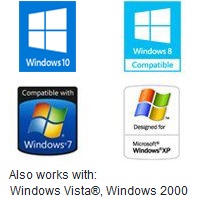One common issue faced by Windows users happens when the display driver, which the driver that works with a computer’s video card to create the visual display users see on their monitor, crashed repeatedly. When this happens, users are presented with an error that reads “Display driver stopped responding and has recovered“.

Error “Display Driver Stopped Responding”
Even though the computer is able to recover from the error, repeated errors can cause serious disruption while trying to operate a computer. In order to solve the issue, let’s first examine why it happens.
Error Causes
There are several reasons why Windows users may be on the receiving end of display driver crash notifications. Some of these issues can be addressed simply by changing a few settings within the Windows operating system.
The issues that cause display driver crashes of this type are as follows:
- The display driver has been updated by the manufacturer for compliance and the existing driver requires an update to function properly
- The computer’s speed has been significantly slowed through the use of graphics intensive applications, or two many applications are running in the background during the computer’s day to day operations
- The time limit that has been automatically set for the graphics processing unit to display images is being exceeded, and the settings need to be changed
People using older machines who have updated their version of the Windows OS should note that their video card may not provide a driver that is compatible with the version of Windows they are running. In this case, reverting back to an old version of the operating system or buying a new video card are the two primary solutions.
Resolving Display Driver Crash Issues
Drivers
In most cases, the cause of this problem is the need for drivers to be updated. The best way to make sure that your drivers update routinely is by installing Driver Turbo to search automatically for new drivers and install the latest version of any existing drivers on the system. For users who do not wish to do this, checking for new drivers manually is another more time consuming option.
In order to do this, users must do the following:
- Locate the make and model of their video card, which can be done by opening the Windows control panel, clicking on Device Manager and expanding the ‘display adapters’ tab, which should list any video cards the system has
- Go to the manufacturer’s site and search for the option to download drivers
- Download and install the appropriate drivers for the model – most installers are easy to use .exe files that install the driver automatically
Once a new driver has been installed, the computer should be rebooted and the user should attempt an activity that previously caused the crash to assure that the driver was the problem. If it was, problem solved. If not, the user should move on to the next step.
GPU Processing Time
This is another issue that is fairly common. Windows has automatic settings that determine how much time the GPU is given to generate graphics, and when that time limit is exceeded, the display driver crashes and recovers. In order to avoid the error, changing the time limit allotted to the GPU is necessary. Microsoft provides an automatic utility to fix this issue on their website, but it can also be done manually by carefully following these instructions. Before performing this task, users should identify whether their version of Windows is 32 or 64 bit by right clicking on the Computer icon, selecting properties, and noting the version as listed next to ‘system type’.
- Exit any program that is running in Windows
- Click on the Start menu and locate the search box. There, type regedit to bring up the option to edit the registry. Double click on the program regedit.exe. If prompted, give administrator permission or type
- Look for the subkey HKEY_LOCAL_MACHINE\SYSTEM\CurrentControlSet\Control\GraphicsDrivers in the registry and click on it
- Locate the Edit menu and select New
- If the user is running a 32 bit version of the OS, they should select DWORD(32-bit) from the drop down menu, and if they are running 64 bit, they should select QWORD(64-bit)
- In either case, TdrDelay should be inputted as the name. The user must hit enter and then double click the name they just created, changing the value data to 8 and clicking OK
The computer should then be restarted and tested for issues.
Background Performance Effects
An excess of graphically intensive games and programs or a large number of resource intensive programs running in the background can be detrimental to the function of the Windows OS. When programs aren’t being used, they should be closed. If the problem persists, users should use Windows’ built in performance utilities to attempt a fix. This can be done easily by heeding the following:
- Within the Windows control panel, locate the Performance Information and Tools category
- There, locate ‘adjust visual effects’ and give administrator permission or type the word ‘password’ if promoted
- Locate and select the ‘visual effects’ heading and select ‘adjust for best performance’ and confirm the action by clicking OK
Again, after completing this action, the computer should be rebooted and tested.
Generally speaking, these three methods can resolve most driver crashing issues. As previously addressed, if the user has an older machine with a newer version of Windows, these techniques may not work due to a need for hardware upgrades. It is always best to check the specs of a new OS as well as the hardware compatibility of an existing machine before upgrading.


